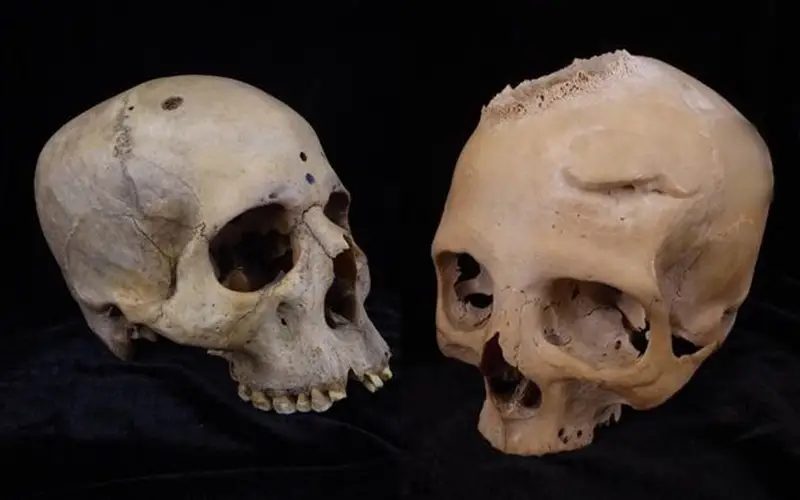
4,000-Yr-Old Skulls Show Ancient Egyptians Tried To Treat Cancer
NEW DELHI, (IANS) – Ancient Egyptians attempted to operate on excessive tissue growth or learn more about cancerous disorders after a patient’s death, revealed a study on two 4,000-year-old skulls.
Known to be the place of one of the early civilizations, ancient Egyptians have been known to identify, describe, and treat diseases and traumatic injuries, build prostheses, and put in dental fillings.
To understand their further prowess, an international team of researchers studied two human skulls — male and female and each thousands of years old.
The cut marks on the skulls revealed the extent of traumatological and oncological treatments practiced by the ancient Egyptians, they said in the paper published in the journal Frontiers in Medicine.
Edgard Camaros, a paleopathologist at the University of Santiago de Compostela in Spain called the discovery “unique and extraordinary” evidence of how ancient Egyptian medicine would have tried to deal with or explore cancer more than 4,000 years ago.
The two skulls — Skull and Mandible 236, dating from between 2687 and 2345 BCE, belonged to a male individual aged 30 to 35, while Skull E270, dating from between 663 and 343 BCE, belonged to a female individual who was older than 50 years.
Microscopic observation of skull 236 showed a big-sized lesion consistent with excessive tissue destruction, known as neoplasm.
Further, there were also 30 or so small and round metastatic lesions scattered across the skull, with cut marks probably made by a sharp object such as a metal instrument.
“When we first observed the cut marks under the microscope, we could not believe what was in front of us,” said Tatiana Tondini, a researcher at the University of Tubingen in Germany.
Analysis of Skull E270 also showed a big lesion consistent with a cancerous tumor that led to bone destruction, and two lesions from traumatic injuries that received treatment.
“This may indicate that although today’s lifestyle and cancer-causing substances in the environment increase cancer risk, it was also a common pathology in the past,” the team said.




